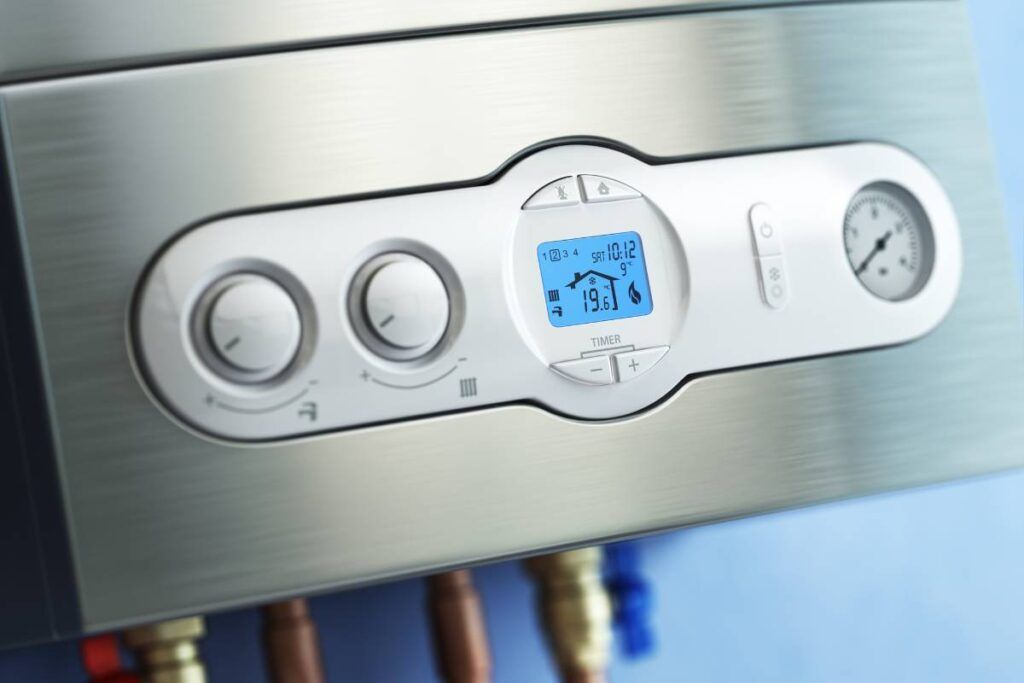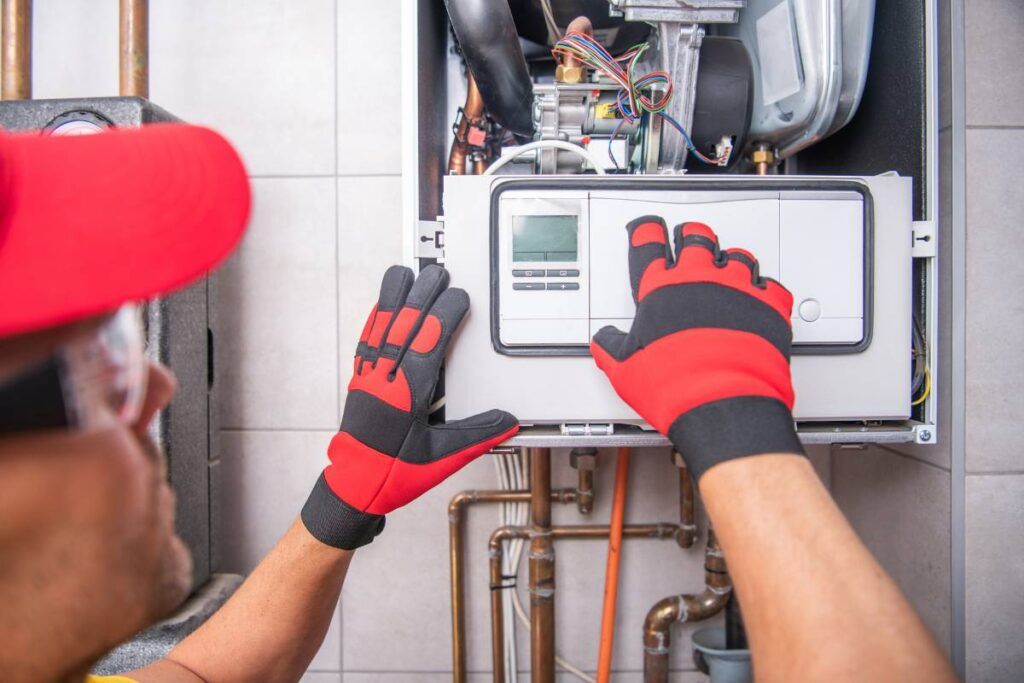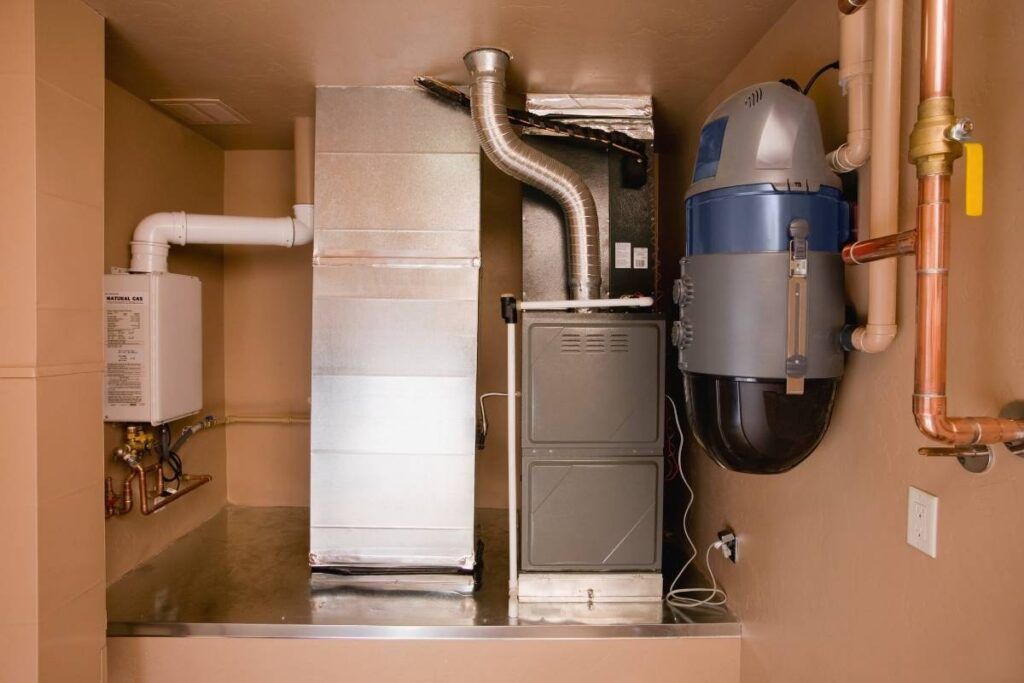I know how stressful it would be if the furnace caused issues, especially during the winter, by not providing the warmth you crave. If your furnace is shutting off after 30 seconds, and you want to know the possible reasons, you are at the right place.
When you notice your furnace shutting off after 30 seconds, inspect components like a thermostat, flame sensor, pressure switch, induced motor, and control board. You can fix it by replacing the faulty parts. Other possible causes are airflow issues and choosing the wrong size of the furnace.
In the article, let’s discuss the possible reasons for your furnace shutting off after 30 seconds. So, keep reading.

Check out our list of top-handpicked products for all your electrical, appliance, and HVAC system needs to keep your home running smoothly.
This post includes some affiliate links.Why is my furnace shutting off after 30 seconds?
A furnace is a basic requirement during winter.
It is important to check the working condition of the furnace before winter arrives and troubleshoot it as soon as possible.
Is your furnace turning on and switching off immediately after 30 seconds?
It may be due to any of the causes mentioned below.
Start by inspecting the root cause, and you can fix the issue by following the steps listed below.
1. Thermostat faults
The thermostat is an integral part of the furnace.
It is used to signal the furnace when the temperature in the house falls below the fixed temperature.
It is usually mounted on the house wall and will detect the temperature up to the limited surrounding but not throughout the home.
It is common to have multiple thermostats installed in a house to set the temperature in each area based on the heating and cooling requirements of the particular area.
It acts as the furnace’s brain to turn it on and off when the temperature falls in a particular area.
If the thermostats are faulty, a furnace may shut off and on immediately.
Another issue arises in the location of the thermostat.
Placing the thermostat near the heat source may cause a malfunction in the functioning of the furnace.
Also, ensure you have placed the furnace in the central area where you and your family spend the most time.
If the thermostats are faulty, replace them with new ones.
Consider seeking help from a professional to replace the thermostat.
2. Flame sensor issues
The main role of a flame sensor is to monitor whether the flame or the gas is being produced.
You can locate the flame sensor in the burner’s front panel, and it looks like a rod that protrudes out in the same place where flame arises out of the burner.
Flame sensors are positioned in front of the ignitors.
For example, if the flame sensor is placed on the right side, you can find the ignitor on the left side.
Burners in the furnace produce flame, and the rod-shaped flame sensor detects the flame to signal the furnace’s control panel to convey the system’s proper functioning.
When the flame is not produced in the system, the flame sensor will stop sending the electrical signal to the control panel, indicating the improper functioning of the system.
With this indication, a control panel will switch off the furnace for a few minutes or seconds, leaving the gas valve open.
By doing this, a flame sensor prevents the gas leakage from causing any danger.
If the flame sensor is faulty, your furnace will turn off after a few seconds.
Check if the flame sensor is accumulated with dirt and debris; it won’t detect the flame causing the issue.
So, cleaning the flame sensor may fix the fault if it is not faulty.
If you find the rod in the flame sensor broken, you must replace it.
You can hire a professional to replace the flame sensor in your furnace.
3. Airflow issues

Airflow in the furnace is essential to keep a balanced temperature in each area by transferring the heat through air ducts.
If one area of your house is warmer than another, it is likely due to airflow issues.
It will also cause the issue of the furnace switching off after a few seconds.
If there is low airflow, the heat exchanger will start to heat.
When it gets heated, the high-limit switch in the furnace will be tripped, switching off the furnace to prevent hazards.
There are certain causes for the low airflow; let’s discuss the causes.
Dirty air filters
Air filters play an important role in pulling the air out of the heat exchanger.
If the air filter is accumulated with excess dirt and debris, it will restrict enough airflow, causing poor air circulation through the system.
To prevent this issue, replace the air filter once every six months.
Or you can also clean the air filters with the assistance of a professional.
Leaking air duct
Air ducts are responsible for transferring the air from the heating system to the house.
As air ducts are far from sight in the ceilings and wall interiors, issues in the air ducts are hard to examine.
If there are cracks and damages in the air duct, the air will start leaking through it.
Resulting in a low airflow issue.
It is best to consult a professional to solve the issue.
Dampers issues
Dampers are connected to the air ducts.
Doors in the dampers open and close to allow airflow inside the air duct.
If the dampers are stuck closed, there will be no air circulation in the air duct.
You can control the dampers with the thermostats.
If there are electrical issues, consult a professional to repair them.
Damaged air handles
Air handles act as a medium to facilitate airflow in the system for ventilation and heat exchange.
If the air handles are damaged automatically, it reduces the airflow in the system, leading to an imbalance in temperature in the house.
To fix this issue, you must repair or replace the air handles in your furnace.
It is best to hire a professional to do the job.
4. Pressure switch fault

The pressure switch is crucial in the furnace system as it detects pressure.
When you turn on the furnace, the pressure switch opens, and inspect the pressure.
A pressure switch closes itself when it detects the negative pressure in the furnace, letting the exhaust expel out of the furnace without any risks.
As a pressure switch is attached to the electrical circuits, the furnace starts to work when it closes.
If the pressure switch sensor shows no negative pressure, it shuts off the furnace, preventing exhaust gas leakage.
So it acts as a safeguarding feature by ensuring safety.
Here are the common causes of the pressure switch fault:
Damaged hose
A pressure switch is connected to the two hoses.
Check if they are tightly attached.
If the hosses are damaged or loosely attached, a pressure switch will not close.
If the pressure switch is not closing, a furnace will not operate.
In such a case, replace the hoses to fix the issue.
Debris accumulation in the switch
Check if dirt and debris are accumulated.
If the switch is dirty, clean it thoroughly to fix the issue.
Consider seeking help from a professional to clean the switches.
Damaged switch
Another important cause is when a switch or part of the switch is broken.
If that’s the case, you must replace the switch.
Because it is hard to repair the switch, consider hiring a professional to replace it efficiently.
5. Induced motor faults

The inducer motor plays an important role in bringing air into the burner and expelling the air from the flue.
The function of the induced motor is important for the pressure switch to function as it helps to bring enough airflow to enable the pressure switch to open and close effectively.
It also helps to activate the ignition process in the furnace.
The effective function of the induced motor is crucial for the functioning of the pressure switch.
Another important function of the induced monitor is to help the furnace expel excess gas in the heat exchanger, as it will be tuned a minute before the burner.
This function of the induced motor is to ensure that the heat exchanger doesn’t become sooty and prevents dirt accumulation.
The induced motor is the actively functioning part of the furnace, as it keeps functioning until it is switched off.
It also helps to blow air circulation throughout the system, increasing the furnace’s efficiency.
If the induced motor is faulty, the furnace’s efficiency will be affected as it may get dirty without the induced motor functioning well.
You can understand that the induced motor is faulty by hearing the unusual buzzing noise in the furnace system.
Your furnace will stop working completely if the induced motor becomes faulty.
In such a case, you must replace the induced motor.
Consider seeking help from professionals to replace the induced motors.
6. Control board faults

The control board of the furnace monitors and regulates all the system functions.
A furnace will not start if the control board is faulty.
You can locate it inside the system near the blower motor.
It receives the signal from the thermostats, a pressure switch, and an induced motor to decide whether to turn it on or off the furnace.
Another important function of the control board is you can use it to diagnose the issue in your furnace.
A series of light codes indicate certain issues in your furnace.
You can refer to your user manual to understand the codes and their meaning.
If your control board is faulty, replace it with the guidance of a professional.
As you can’t repair the control board, replacing it is the only solution to fix the issue.
7. Blocked heat gates
Heat gates are located at the house’s interior, and the hot air from the furnace is transferred to the interior of your house through these heat gates.
If the heat gate is blocked by dirt and debris particles, the hot air will be stuck inside the heat gates.
Leading to the overheating of the system.
If the overheating occurs, the furnace will shut down and turn off after a few seconds if you again turn it on.
To fix this issue, you must clean the heat gates regularly.
Inspect if there is a blockage in the heat gates and remove them for the efficient functioning of the furnace.
8. Blocked exhaust vent
The exhaust vent expels poisonous gases from the furnace to the outer environment.
When the furnace is turned on, it begins to burn the gases.
As a result of burning gases, water vapor, carbon dioxide, and heat are produced.
In addition, other gases like carbon monoxide, nitrogen, and sulfur oxide will also be produced.
These are poisonous gases, and they are extremely harmful to human beings.
If nests, dirt, or debris particles block the exhaust vent, these poisonous gases will be released inside your home.
And also, to some extent, the furnace will stop working and shut off immediately.
To fix this issue, you must clear the blocks in the exhaust vent.
9. Wrong size of the furnace

People should avoid buying a too-big or too small-sized furnace for their house.
If your furnace turns off after a few seconds, it may be due to the wrong size.
If your furnace is large, it is necessary; there will be an imbalance in the temperature in the different areas of the house.
One place would feel cool and the other one hot.
As it turns on and off constantly, the utility bill will increase, and the function of a furnace will not be efficient.
And it also reduces the lifespan of the furnace.
Buying an undersized furnace causes issues like not being able to maintain the desired temperature for the longest time.
It also increases utility bills. And it also reduces the lifespan of the furnace due to constant turning on and off status.
To fix this issue, measure your house and buy a furnace that will suit your house better.
Also check:
- Furnace Only Works After Reset: 9 Problem+Fix
- 15 Reasons Your Furnace Won’t Turn On (+Fix)
- 14 Reasons Your Furnace Won’t Turn Off (+Fix)
- 16 Reasons Your Furnace Is Not Heating (+Fix)
- 12 Reasons Your Furnace Is Blowing Cold Air (+Fix)
- 10 Reasons Why You Shouldn’t Run A Furnace Without A Filter
- 9 Reasons Your Furnace Is Short Cycling (+Fix)
- 11 Reasons Your Furnace Won’t Stay Lit (+Fix)
Final thoughts
The furnace is a safety device to keep your home warm and your family’s health in check during winter. If it shuts off after 30 seconds, it may be due to certain faults in your furnace.
In the article, I have mentioned 9 potential reasons why your furnace is shutting off after a few seconds. Some of the common causes are faulty thermostats, faulty flame sensors, low airflow in the furnace, faulty pressure switches, and control board faults.
One or two parts may become faulty in your furnace. You must figure out the cause and fix the issue by following the steps mentioned in the article.
Consider referring to the user manual to understand the internal parts of your furnace, as the functioning of the furnace may differ based on its brand and model.
Where is the furnace sensor located?
A flame sensor is a metallic rod located on the burner assembly. It will be in a bent position inside the furnace on the opposite side of the pilot flame.
Will a furnace shut off if it gets too hot?
If the furnace overheats, it will shut off automatically. If your furnace is overheating, there must be a problem with it.
Reference: Wikipedia.
